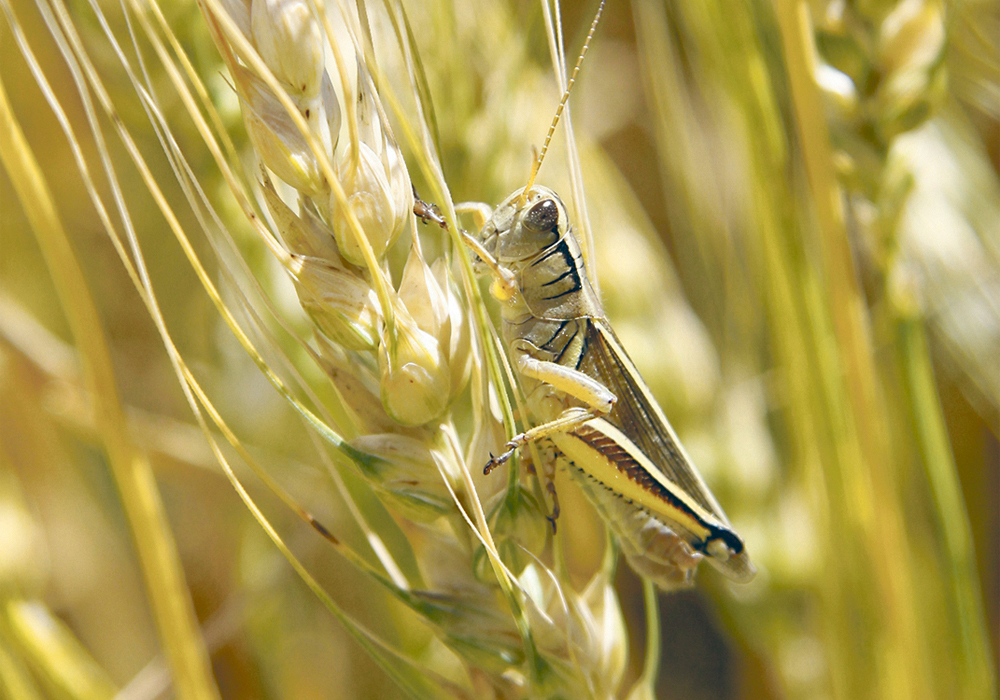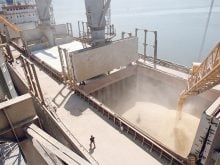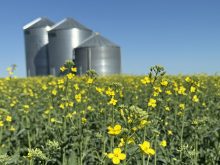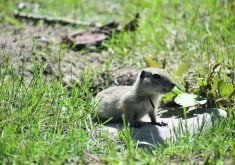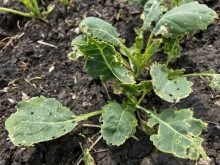Grasshopper infestations across Alberta are patchy this year, following a cool April and scorching May with small pockets of moisture, according to a University of Lethbridge entomologist.
The usual hotspot for grasshopper populations in southeastern Alberta got a late start compared to the rest of the province, said Dan Johnson. He cited a wet early spring. At the same time, Edmonton experienced 30 C temperatures.
“That really made a huge impact on the grasshoppers in the south. They were about two weeks behind the rest of the province. Very unusual,” said Johnson, describing conditions in the Manyberries and Foremost regions south of the Cypress Hills. “That area is not too bad this year. Not like Oyen and Empress.”
Read Also

Trump’s tariffs take their toll on U.S. producers
U.S. farmers say Trump’s tariffs have been devastating for growers in that country.
On a recent scouting trip, Johnson said grasshopper populations from Viking to Taber appeared to be lower than average despite the dry conditions in the central part of the province.
There are some hotspots, he added, namely in areas south and north of Lethbridge, as well as the Oyen region along the south-central part of the province bordering Saskatchewan.
Noting the Agriculture Canada forecast mapping this season, Johnson said that’s not always the best predictor of conditions because it’s formulated to reflect breeding conditions rather than actual population numbers.
The current Agriculture Canada oviposition grasshopper mapping shows above average conditions, especially compared to the rest of the Prairies, for grasshoppers south of Medicine Hat.
Johnson cautioned that map depicts estimates of grasshopper eggs being laid and the potential for infestations next season if conditions are right.
As rough as it might be this season for some producers, Johnson said province-wide, this year is middle of the road.
“As bad as it is for certain people who are in the middle of it, (populations are) not even to the halfway mark if you look at it historically. If you took 30 to 40 years of grasshopper counts, this year wouldn’t even be up to the middle,” said Johnson.
He said one of the odd things about this year is the shift in species across the province.
Lesser migratory grasshoppers, which are often seen as a bellwether species, made up less than one percent of Johnson’s sampling in the northern half of the province and only a little more in the south.
“It’s almost non-existent in some places,” he said. “Mostly this year it’s been clear-winged and two-striped.”
After a scouting trip in the Two Hills and Bonnyville areas, Johnson said those regions are seeing light populations that will likely see smaller populations next year as well.
Despite some reports that indicate bad grasshopper infestations this year linked with drought, Johnson said that’s not what’s going on at ground level.
Johnson stressed there are several factors that go into grasshopper populations and a couple of well-timed heavy rains in a region can completely change the dynamic of numbers of grasshoppers.


